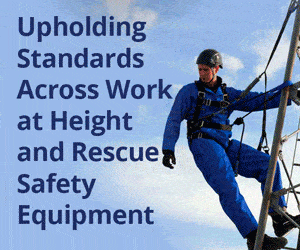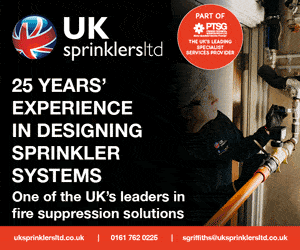In recent months, cases of human metapneumovirus (HMPV) – a flu-like disease first identified in 2001 – have surged across the UK, following a suspected outbreak in China.
According to the latest data from the UK Health and Security Agency (UKHSA)1, the percentage of people testing positive for the virus – which can lead to bronchitis, pneumonia, or upper and lower respiratory infections – increased significantly during the third week of December and remained at this higher level the next week2. This, combined with the winter flu crisis that the UK is currently battling, has placed intense pressure on hospitals, with healthcare workers struggling to keep up with the influx of new patients coming through their doors.
Here, Colin Townsend, Sales Manager, Mitsubishi Electric Hand Dryers, tells us more about the problem and how effective hand washing – and drying – can help solve it.
As cases are expected to continue climbing over the following weeks and months, health officials have recommended that people take sensible precautions to avoid catching or spreading HMPV, and other respiratory illnesses. One of the key recommendations is that hands are washed regularly and thoroughly, given that contact between surfaces is among the main ways the virus is spread3. This not only means ensuring that hands are washed for at least 20 seconds to maximise the amount of bacteria that’s removed, but also that they are completely dried. This is especially vital because any water residue left on the hands can effectively act as a breeding ground for additional microorganisms, or allow for bacteria to be more
easily transferred to other surfaces, with research showing that wet hands are 1,000 times more likely to transmit bacteria between surfaces than dry ones4.
The Challenge
Despite this, research shows that less than half the population dry their hands after washing5. Of those who do, many spend well below 20 seconds drying, meaning far fewer bacteria are removed than otherwise would be6. This is particularly alarming in the context of healthcare settings such as hospitals, where workers typically have between 39,000 and 4.6 million bacteria on their hands at any given time7. Part of the reason for this comes down to the failure of many healthcare workers to perform appropriate hand hygiene, with 40% of healthcare-associated infection (HAI) cases caused by cross-infection, which often occurs via the hands through contact between workers or other patients8. Considering such infections are a major cause of morbidity and mortality, the importance of practising correct hand hygiene in hospitals and other public facilities is clear.
It is not just a failure to adequately dry hands that can contribute to the spread of infection; the method of drying is another pivotal factor. While paper towels and warm air hand dryers are both common drying methods in public settings, they can cause a 150% rise in colony-forming units (CFUs), meaning their use can actually increase the level of bacteria present on the hands or in the surrounding air9.
Why Air Curtain Dryers are the Solution
This is where high-speed air curtain dryers can prove highly effective at limiting the spread of infection. After all, with some of the most advanced air curtain dryers on the market, there is no increase in the CFUs created, and no additional bacteria is transferred into the atmosphere or onto nearby surfaces. This translates to potentially <4 units of disability adjusted life years (DALYs) – which measure overall disease burden in the number of years lost due to ill-health, disability, or early death – compared with 12 and 13 units for paper towels and warm air hand dryers respectively10. Moreover, research shows that paper towels and warm air dryers typically affect human health roughly three and 3.5 times respectively more than air curtain dryers11. As such, the use of high-speed air curtain dryers in healthcare settings can significantly limit the number of HAIs caused by physical contact, or through airborne infection.
On top of this, these dryers operate far more efficiently than either paper towels or warm air dryers, which typically have a drying efficiency of between 30 and 40 seconds.12 With air curtain dryers, meanwhile, the drying time can be cut down to between nine and 11 seconds13. This time saving is particularly valuable considering how many people don’t dry for a sufficiently long period to achieve full dryness, if they dry at all. By shortening the process to between just nine and 11 seconds, high-speed air curtain dryers can boost drying compliance considerably without bacteria levels rising, or users having to spend the 20 seconds or more that they are otherwise advised to dry for.
Besides their speed and cleanliness, air curtain dryers can also be far more durable than their counterparts. For some of the most sophisticated air curtain dryers, the average product life can be nearly three times higher than other models, surviving for upwards of one million uses. This means that the impact on environmental sustainability – and, therefore, directly on human health – that these systems have is even lower than with dryers that do not last as long, and need to be replaced more frequently as a result.
Furthermore, some high-end dryers now come equipped with clean air filters, which work far more efficiently than more standard High Efficiency Particulate Air (HEPA) filters. This is because HEPA filters are prone to rapidly becoming clogged, not only severely affecting the hand dryer’s efficiency by drastically reducing the airflow, but also diminishing the hygiene effectiveness of the filter over time. Adding to this, HEPA filters tend to cause large loads on the motor, increase noise and power consumption, and are both expensive and difficult to replace. Clean air filters, meanwhile, are considerably cheaper, don’t contribute to noise generation or impact motor performance, and effectively remove – or otherwise kill – even tiny pieces of dust and bacteria. As such, air curtain dryers with such features that are installed in public settings aren’t just more advantageous from a health and safety perspective, but from a cost-effectiveness one too.
A Crucial Line of Defence
Given the importance of proper hand washing and effective hand drying, those responsible for managing public facilities should consider how implementing high-speed air curtain dryers can simultaneously make the hand drying process significantly more efficient and effective, thereby providing a much-needed boost to hand hygiene compliance. As cases of HMPV continue to rise across the UK, the use of such dryers can not only have a transformative effect in reducing the number of new admissions to hospitals, but also allow healthcare workers to limit the number of HAIs that are caused by cross-infection, thereby bringing morbidity and mortality rates down markedly.
The impact that air curtain dryers can have is hugely significant, and their cost-efficiency, coupled with the ease with which they can be installed, make them a crucial and highly-effective line of defence against the threat posed by emerging and evolving diseases.
For more information on Mitsubishi Electric’s range of hand drying solutions, please visit https://wave.mitsubishielectric.co.uk.























































